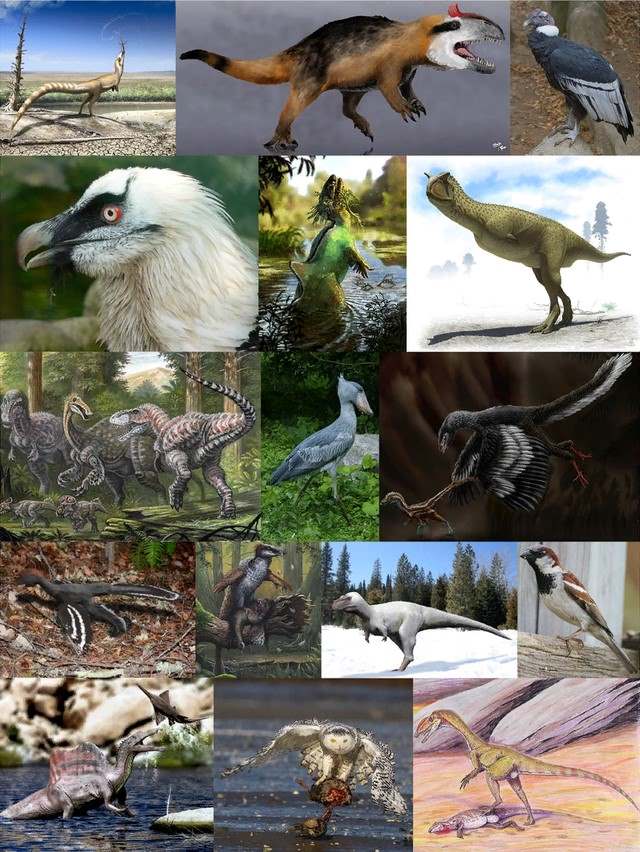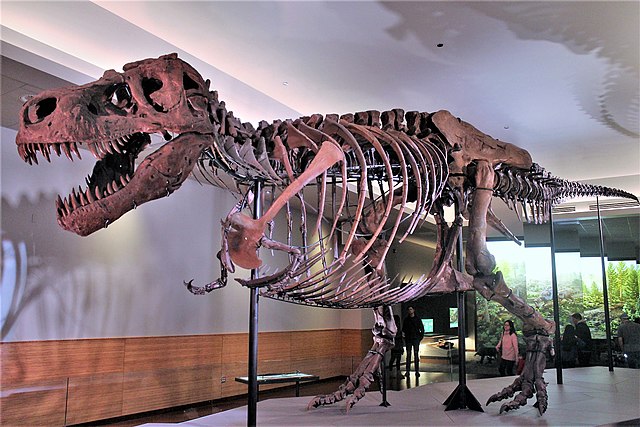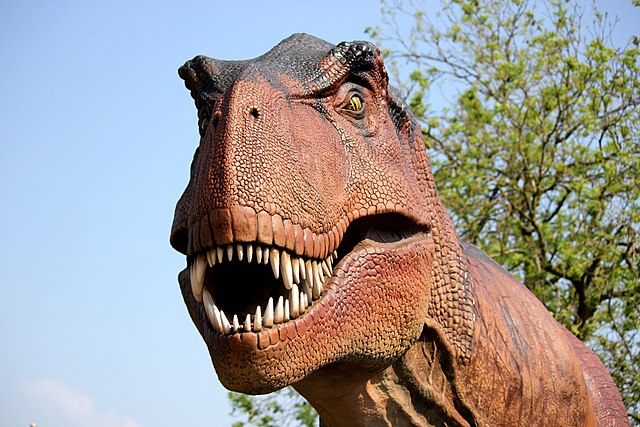On April 1, 2024, a juvenile Tyrannosaurus rex (T-rex) presented to the clinic after being found with a leg injury. The triage team rushed into action, already prepared to handle a species never seen at the clinic. Zoo and wildlife veterinarians need to have the tools to work on any species, including ones they have never seen, and training students to have those tools is extremely important to the educational work of the Wildlife Medical Clinic.

Oftentimes in zoos and wildlife rehabilitation centers, veterinarians determine the needs of rarer species based off closely related common species. The critically endangered California condors are a prime example of this, as centers were highly equipped to handle their care since they had already been working with Andean condors for many years. So, what is a Tyrannosaurus rex closely related to? Modern birds! Therapod dinosaurs (which include T-rex and other bipedal dinosaurs such as velociraptor) gave rise to all species of modern birds. Birds and Therapod dinosaurs share many common features, including feathers, pneumatized or “hollow” bones, air sacs instead of lungs, and a warm-blooded, or endothermic, metabolism.
Knowing that T-rex are related to our bird patients allowed the triage team to determine appropriate medications and doses, viable treatment options, and important aspects of husbandry. This allowed them to administer pain medications and sedatives to the patient. Human safety is just as important as patient safety when working with non-traditional species. Once it was more amenable to handling, the triage team discovered that the T-rex had a fractured fibula, a long bone of the leg. They splinted the leg, administered IV fluids, and set up an appropriately sized enclosure to restrict movement. Using our nutrition calculator for raptors, it was estimated that this patient, weighing about 4 metric tons, should receive about 45kgs (100 lbs.) of meat per day to sustain its large appetite.
A few days later, once the patient was more stable, radiographs were taken to determine the extent of the fracture. Luckily, the fracture appeared non-displaced and was already forming a callus. The T-rex was re-splinted and will continue to receive supportive care until it is ready for transfer. Due to public safety concerns over releasing a T-rex into the Champaign-Urbana area, this patient will be transferred to the U.S. Fish and Wildlife Service for placement into a new dinosaur preserve located on a tropical island approximately 100 miles off the coast of Costa Rica.
April Fool’s!

While this case report is a fictional event written for April Fools Day, paleontologists and veterinarians do work closely together. The anatomy of modern species is a common reference point for the anatomy of prehistoric creatures, as many of the same bones and soft tissue structures have been conserved over time. Additionally, pathology (the study of disease or injury) of modern animals can be used to determine pathology of prehistoric animals. FMNH PR 2081, a Tyrannosaurus rex located at the Field Museum of Natural History and commonly known as “Sue”, is a great example of this. Scientists have been able to determine the cause of multiple injuries to her skeleton that are still common in animals today, from osteomyelitis (a bone infection) in her leg bones due to improperly healed injuries to bony erosion in her mandible (the lower jaw) from parasitic organisms. Veterinary medicine is an interdisciplinary field by nature, both in what we draw from others such as zookeepers and wildlife rehabilitators, and in what we can provide to paleontologists and other fields of science. So, if a Tyrannosaurus rex, or any other prehistoric animal, decides to visit the Wildlife Medical Clinic, we will be ready to treat it!
This was written by Tyson, one of our Wildlife Clinic Managers (Class of 2026).


